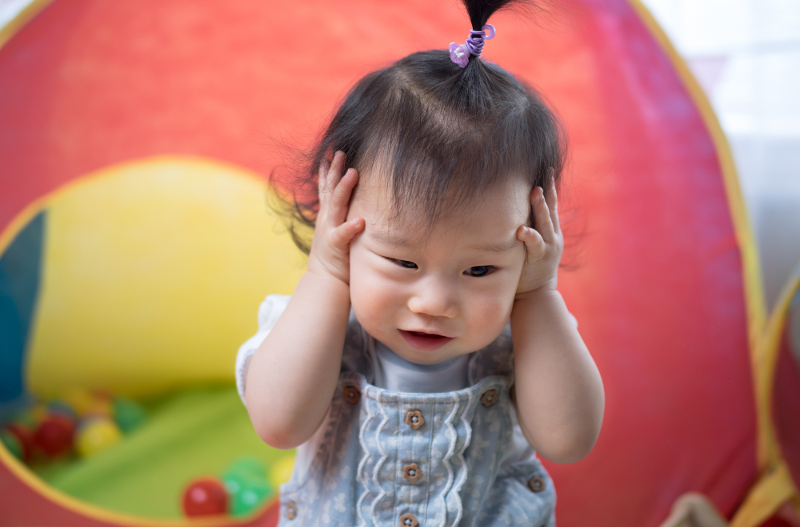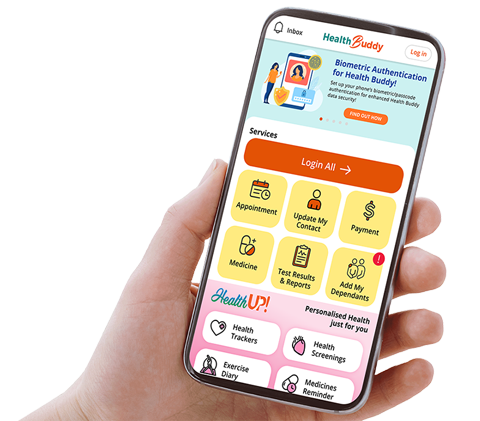
If a child presents with difficulties in accepting different food textures or smells, appears clumsy, bumps into objects frequently, avoids wearing clothing of certain textures, or gets upset with tags or seams of clothes, these may be signs that they could have difficulties with sensory processing.
What is sensory processing?
Humans explore the world and discover ourselves through senses. These include the five basic sensory systems – touch, hearing, sight, taste and smell.
We also have three “hidden” senses that are equally important:
- Proprioception: The awareness of our body in the space around it (e.g. body awareness)
- Vestibular: The system that helps with balance, spatial orientation and movement
- Interoception: The awareness of our internal body feelings (e.g. hunger, thirst)
Any activity that stimulates the senses creates a sensory experience – which enables our senses to mature and help us to make sense of the external world.
With practice, our brain processes sensory information more efficiently, and we can respond to the environment with adaptive responses automatically, leading to skill mastery and appropriate regulation of our emotions.

Sensory processing in a growing child
Children develop and learn through sensory experiences. Below are some adaptive responses that may be observed at different ages.
| Age | Examples of adaptive responses |
| Birth to six months |
|
| Six to 12 months |
|
| Toddler age |
|
| Preschool age |
|
| School age |
|
(Adapted from O’Brien & Kuhaneck, 2020)
Helping a child with sensory processing difficulties
Everyone interprets and responds to sensory experiences differently. In addition, some children may have difficulties receiving and responding to information from their senses. These may lead to a maladaptive response. For example, misjudging the distance of the hand to the cup, not reaching far enough to pick up the cup or knocking it over unintentionally.
Sensory processing difficulties can be broadly divided into challenges with sensory modulation and sensory discrimination.
| Sensory modulation difficulties |
What is it? Sensory modulation is the regulation of sensory input by the brain, to prevent us from over- or under-reacting to daily sensory experiences. This enables us to manage our behaviours and emotions in an appropriate manner.
Some children may be over-responsive towards certain sensations. A sensation that is tolerable to us may be perceived as too intense for them. For example, sounds from an air-conditioner are usually soft and easily ignored, but these may bother a child with auditory hypersensitivity. This may result in avoidance behaviours or inattentiveness, as the child is easily distracted by multiple sensations from the environment.
Conversely, some children may be less responsive towards sensations. Sensations that are obvious to us may not be noticeable to them. For example, the child may appear inattentive or not respond when given verbal instructions at a conversational volume. They may appear inattentive, but in this case, it is because they are unable to register, process and respond to the usual level of auditory inputs. Occasionally, some children with hyposensitivity may also appear to seek out sensations ‘excessively’ to function (e.g. fidgeting or moving frequently to stay focused in class). This is because their sensory systems may need more input than usual to respond appropriately. |
| Sensory discrimination difficulties |
What is it? Sensory discrimination is the process of perceiving and interpreting the unique characteristics of different sensations. Some children may have difficulties, which can impact their perception and motor control.
Difficulties with sensory registration and discrimination may result in a child having issues identifying sensory stimuli accurately, and/or detecting the similarities and differences between stimuli. For example, a child may be unable to differentiate between a coin and a key placed in their pocket based on touch alone.
Children with such sensory discrimination difficulties may appear clumsy, have poor balance, and may fall and trip more frequently. They may also move in an uncoordinated, awkward way, and may demonstrate more difficulties learning new movements. |
What can parents do to support their child?
Generally, parents can introduce age-appropriate sensory experiences to their child using the following tips:
- Incorporate sensory experiences in play and activities of daily living
- Make sensory play a fun experience
- Identify, reflect and discuss about the unique characteristics of different sensory experiences (e.g. begin by talking about the sensations that the child likes or dislikes)
- Make less preferred sensations predictable (e.g. pre-empt the child about the sensory experiences that they may be exposed to)
- Offer graded exposure to sensory experiences at the child’s pace (e.g. begin with familiar objects and introduce one sensory element at a time, adding more when the child is ready)
It is important to consider the child’s tolerance level towards various types of sensory inputs, and not force them to accept an input if they are not ready. Closely supervise the child at all times to ensure their safety.
Seek professional help if:
- The child demonstrates maladaptive behaviour(s) consistently across various settingsIf the behaviour(s) significantly impact daily functioning
- If intense emotional responses continue despite strategies put in place to support the child
Refer a patient At KKH, occupational therapists from the Occupational Therapy Service provide personalised care for children with sensory processing difficulties. An occupational therapist will conduct a holistic assessment of the child’s daily functioning skills. Should difficulties in sensory processing be found to be impacting on daily function, intervention will be tailored to focus on supporting the child’s sensory needs. Community healthcare professionals can refer a child for assessment by the General Paediatrics Service via KKH Central Appointments at +65 6294 4050 or centralappt@kkh.com.sg. |
Resource
References
|
 |
Emily Ong Li Hui, Senior Occupational Therapist, Occupational Therapy Service, KKH Emily holds a Master’s Degree in Rehabilitation Science and is currently pursuing a post-professional doctorate in Occupational Therapy. She serves as the Research Lead for the Occupational Therapy Service in KKH and Co-Lead for Evidence-Based Practice within the SingHealth Allied Health and Pharmacy Research Committee. She plays an integral role in promoting research activities and fostering a culture of research excellence within KKH and across the cluster. Additionally, Emily holds a certificate in Sensory Integration from the University of Southern California, United States of America, and continues to provide clinical care for patients with sensory integration needs. |
 |
Poon Sze Min Jasmine, Senior Occupational Therapist, Occupational Therapy Service, KKH Jasmine is an occupational therapist working with children and women at KKH. She graduated with a Bachelor of Science (Honours) in Occupational Therapy from Glasgow Caledonian University, Scotland, United Kingdom. Jasmine completed the USC Chan Sensory Integration Continuing Education (CE) Certificate Program in 2021, and attended the training for the Supporting and Enhancing NICU Sensory Experiences (SENSE®) programme in 2023. She continues to provide clinical care for patients with sensory needs and support high-risk infants in the Neonatal Intensive Care Unit (NICU) at KKH. |


















